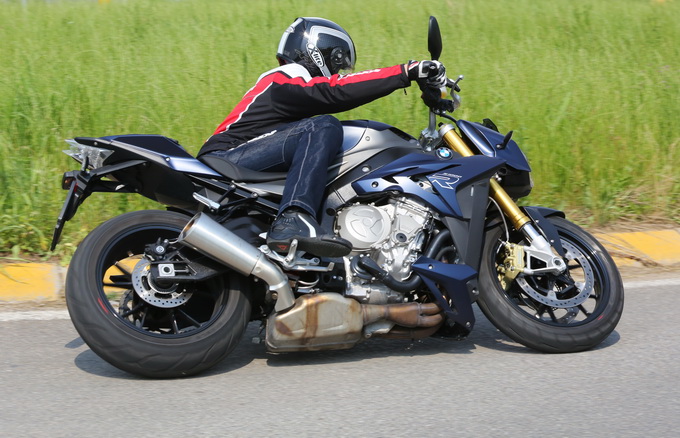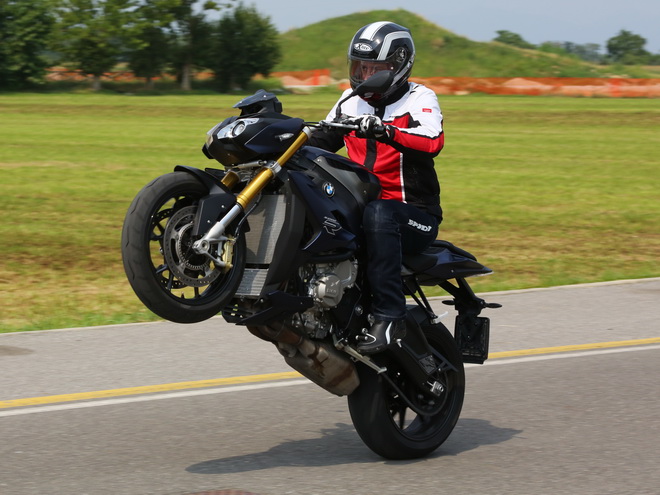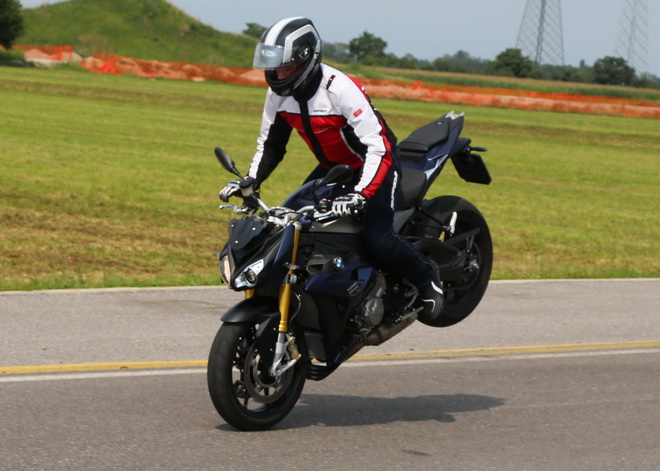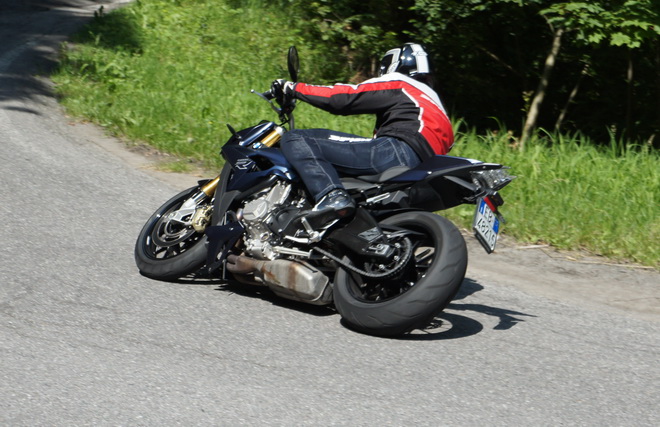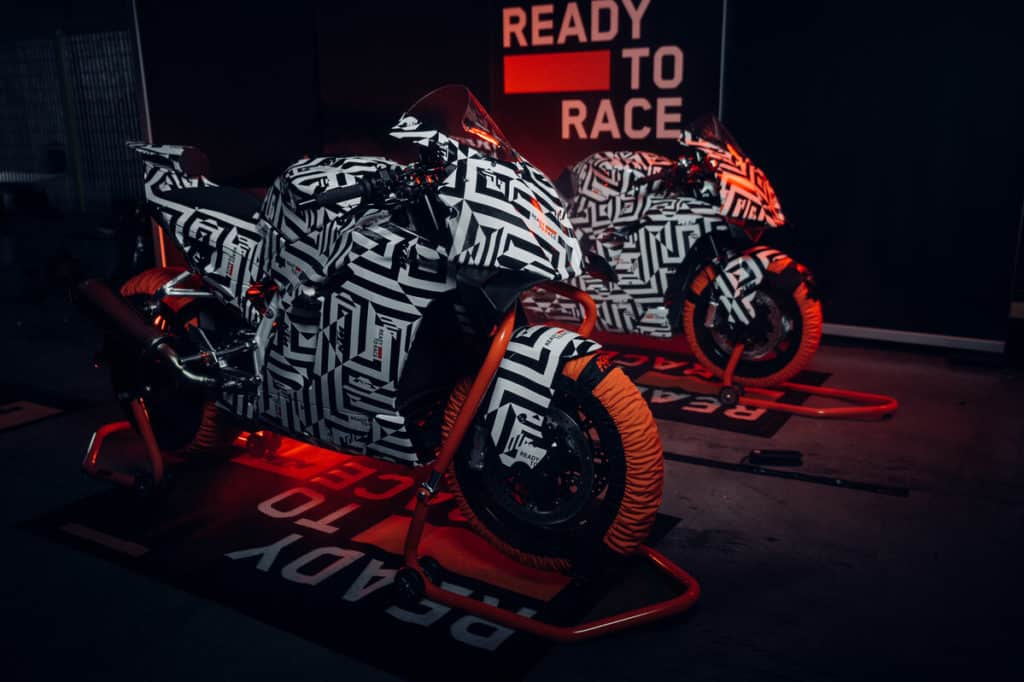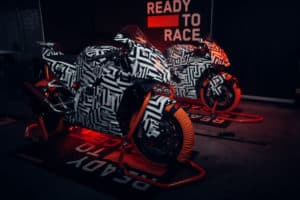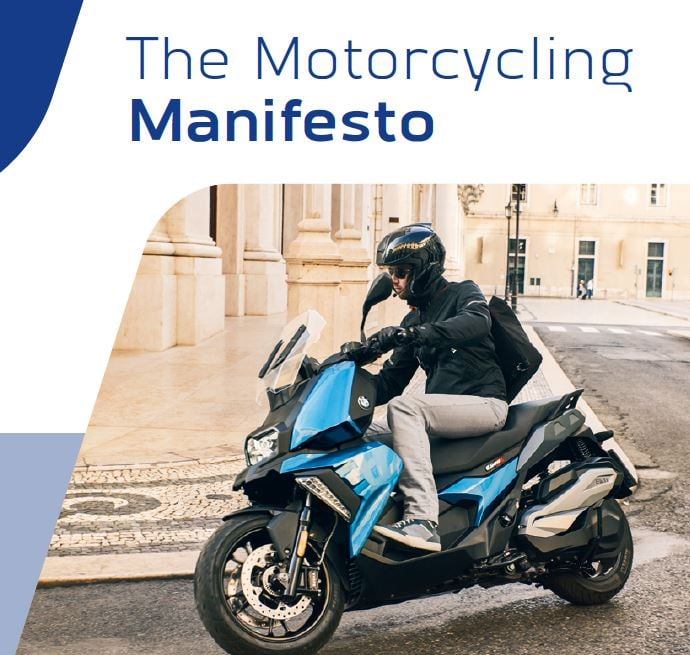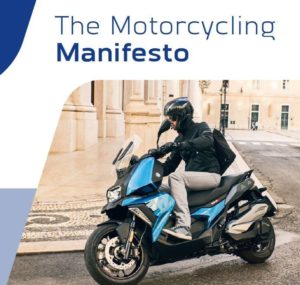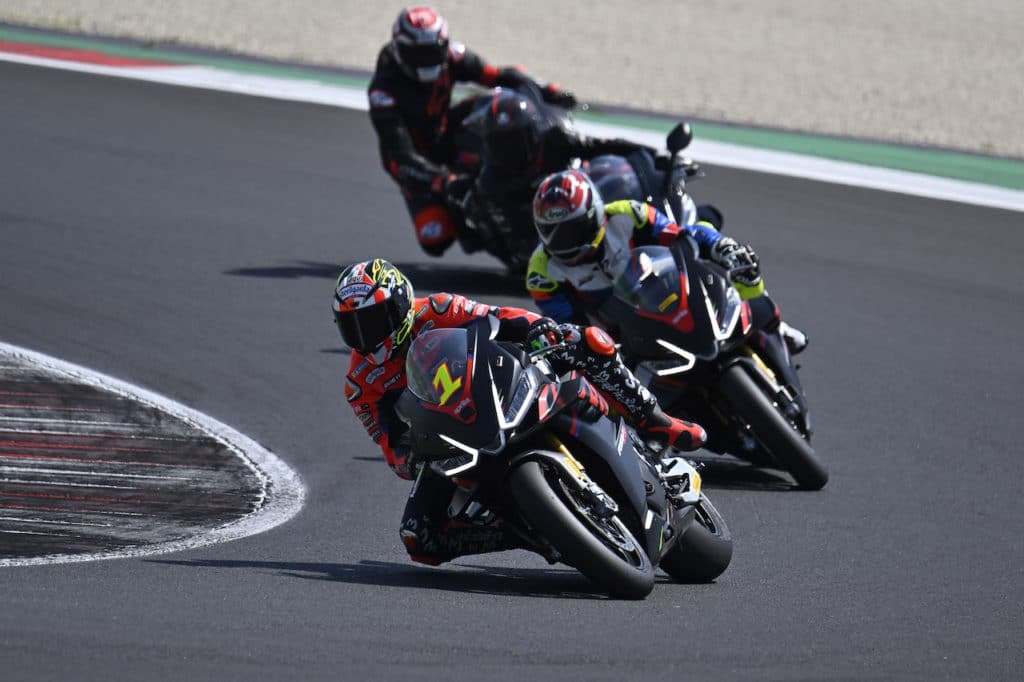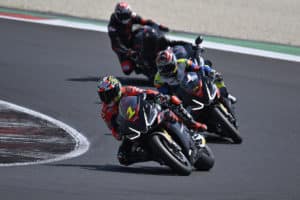BMW S1000R – road test 2014
It loses an R, half a fairing and 33 horsepower, but the substance does not change
When a naked super sports car is transformed from a faired super sports car, its character is often distorted and the engine loses much of its aggressiveness. Reading the data of the new BMW S1000R, with a full 33 horsepower less than the S1000RR, expectations were uncertain, but by driving it we can reassure you, it remains bad, for some even too bad to use it on roads open to traffic, but electronics in this makes the task much easier. In addition to the engine too the chassis is aggressive, with an exaggerated braking system, and refined suspensions, especially if combined with optional packages. It's not one of those bikes on which you immediately feel ready to push to the limit, perhaps also due to some initial awe, but when you begin to understand it it is a wonderful toy. We tested it on a curvy route between the passes of the Bergamo Alps and the impression is that the 12.900 euros of the basic list price are among the best spent ever. As happened in 2008 with the birth of the propeller superbike, even in this case some bimmer enthusiasts will not recognize it as a real BMW, because it does not have a boxer engine or the 4-cylinder "sole" of the K series, but on the other hand they are the only two BMWs that, after trying, even the worst detractor of the German brand would buy.
Aesthetics and finishes:
rating: 
Undressing does not revolutionize it, but the quality of the finishes is only discreet
Many people like it, just as many don't like it, it's certainly not one of the bikes with which you meet the admiring glances of all enthusiasts at traffic lights. Upon its debut at Eicma 2013 it perhaps aroused more criticism than appreciation, even if, from an aesthetic point of view there is nothing objectively contestable, or almost nothing. The only flaws, which we note perhaps precisely because BMW has always accustomed us very well, are related to the quality of the finishes, which we found good, but could be improved, With the 'coupling of some plastics not exactly perfect. For the rest the appearance is that ofthe RR, partially stripped and with a small windshield. Some have criticized it for this, because it transformed the SBK into a naked bike the opportunity to create something more particular and with character was missed, opting for less extreme and sensational solutions. To be honest, we don't mind it at all, especially in different colors (it's also available in white or red) from the blue one of the sample being tested, which makes some chromatic contrasts less evident which are actually pleasant. The S1000R maintains much of the badness of the RR remains unchanged, with the shark gills on the sides (even if not identical), lo short and truncated side exhaust, and the asymmetrical front light cluster. Part of the fairing remains and some new black plastic elements are introduced, useful for covering some mechanical parts, including pipes and the electrical system, which would have been aesthetically ugly if left exposed. The frame and chassis remain practically identical from an aesthetic point of view, even if they change in substance, why not the quotas have been changed. The instrumentation is also substantially identical to that of the S1000RR. Obviously the half-handlebars disappear, replaced by a higher handlebar, excellent for road riding, without putting too much strain on the forearms.
Engine and performance:
rating: 
It loses 33 horsepower, but gains incredible low and mid range pull
Aesthetics count in the choice, there is no doubt, but the substance is something else. Powertrain and chassis make you really love a motorcycle. The new BMW S1000R has a truly infinite engine, which retains much of the wickedness at the top of that of the RR from which it derives, but which has undergone a careful restyling, which suits it unexpected elasticity right from very low revs. He resumes confidently and roundly, then amazes again with one great back starting from 3.000 rpm. Beyond 7.000 it extends in an impressive way up to 12 rpm. The limiter "drops" by 2.000 rpm from the RR's 14.000, with the maximum power of 160 HP (+6 if you choose the Akrapovic exhaust optional) paid to 11.000. The maximum torque is 112 Nm at 9.250 rpm, with ua curve that moves upwards by about 10 Nm for most of the range, compared to that of the S1000RR. Thanks to new camshafts, intake and exhaust ducts with new geometries, and one new electronic engine management called BMS-X, more evolved of the "old" BMS-KP of the RR. The gearbox has unchanged ratios, while the final transmission is shorter, thanks to an extra crown tooth. Also in this case it can be combined, as it was on the sample being tested, with an interesting "little game", with which upshift with wide open throttle, thanks to the very rapid cut that goes to make the QuickShift. It's fun to the point of making a few more shifts than necessary, accompanied by the bang at the exhaust, you earn a few cents per lap if you use the S1000R on the track, but obviously it is not recommended to exploit this functionality when shifting at low rpm. It is nothing more than a system that cuts the throttle, allowing you to "extract" the gear engaged and engage the higher one with a speed that not even a pilot could achieve. This is because the electronics make a millimetric cut, while the right hand would not be able to close and reopen the accelerator as quickly. If the speed is not high enough, or if the throttle is closed, this obviously does not happen optimally, as with any gear shift performed without the clutch. The clutch control is flush, And is surprisingly light even in city driving, where use is intensive. BMW has combined it with an excellent system slipper, which prevents the rear from locking when downshifting. The only real flaw we noticed was the difficult engagement of neutral when stationary to the point of having opted to turn off the engine at the motorway toll booth, rather than persist in the operation. The discharge instead it is discreet if you ride in relaxation, but accompanies cheerful climbs with a nice crackle, which is also repeated when releasing the gas. Returning to the engine theelectronics allows you to manage it as you see fit and based on what you want to do. With the Sport and Dynamic packages (approximately 1.800 euros total) 2 maps are added to the 2 basic ones and a more advanced traction control, which is based on the inertial platform and is able to manage "pure" traction control and anti-wheeling separately, allowing, in the sportiest modes, to wheelie the bike without having to disengage it. All mappings maintain full power, with the exception of Rain, which limits it to 136 horsepower. When you start to get serious, the instrumentation looks like a Christmas tree, thanks to the large LED that "calls" the gear shift when you pass 6.000 rpm.
Ride and handling:
rating: 
When you get to know it, it becomes a sharp and very fun weapon
The riding position is rather front-loaded, not in an exaggerated way, but among its opponents it is one of the "baddest" in terms of approach. By mistreating it and maintaining a sustained pace on the narrow mixed terrain, especially when going downhill, the fatigue on the wrists begins to be felt, even if it remains far from the discomfort of a motorbike with clip-on handlebars. L'steering angle is reduced and it can be seen in stationary maneuvers and in city traffic, but otherwise the S1000R is very easy to handleat all speeds. We only noticed a propensity to lighten the front, which begins to rattle happily, making it rather demanding, but only on the straight at very high speeds, well beyond those allowed on open roads. Playing with the settings the situation improves. The chassis features modified dimensions, with the seat tube inclined by 0,8° more, the trail by 5 mm, and consequently the wheelbase, which rises to 1.439 mm, thanks also to the rear wheel which moves back a few millimetres. The suspensions can be combined optionally to DDC (acronym for Dynamic Damping Control), identical to that of none other than the HP4, which makes them semi-active suspensions, allowing you to choose between basic, soft and hard calibrations. The brakes are monstrous, are those of the RR, with Brembo 4-piston radial calipers and 320 mm discs. It just lacks a little bit of modularity furthermore, if you don't take the measurements and clamp without even exaggerating too much, braking is too abrupt and upsets the bike's set-up, especially if done with the bike already folded, or you find yourself with the rear wheel in the air. Race Abs in aggressive modes it allows you to maintain control over the locking only on the front, leaving the rear free, while the semi-integral braking allows the individually operated front lever to control both brakes, while the rear can be used when you want to manage the rear brake individually, or in any case separately front-rear intervention. On the scales it scores excellent 207 kg in running order, close to the result of its sophisticated RR sister. Driving it turns out a well balanced bike, relatively easy compared to the potential you have to manage, with a rather comfortable riding position, a saddle that has discreet padding, not particularly rigid like some competitors with which you get off in pain after a few kilometres. Among the curves he is perfectly at ease and tremendously reactive and effective both on narrow terrain, but also when the range and speed increase. With the DDC the chassis is at levels that the competition only offers at much higher prices.
Price and consumption:
rating: 
Attractive base price, but some options are a must
The price of the S1000R itself is very interesting. In light of the bike that we had the pleasure of trying out 12.900 euros seem very little, but be careful that they can become almost 15 thousand if you choose the most "interesting" options that BMW Motorrad has on its list. Among the main ones, we consider the Sport and Dynamic packages to be almost indispensable, and add 850 and 950 euros respectively. The first includes DTC, Quick Shift gearbox and cruise control (it may seem like blasphemy, but it is tremendously useful with tutor and lots of power to manage), the second the DDC suspension, LED indicators, heated grips and a small matching fairing underneath to the engine. Consumption is not even exaggerated, with "hardly replicable" paces, we closed our Alpine test ride with a reported average value of 7,3 liters per 100 km. Only on the track do we believe we can do worse, while with more civilized use it is not difficult to get close to the values declared by the manufacturer. The capacity of tank, made of aluminum to keep its weight down, is 17,5 litres.
PROS AND CONS
We like it:
Extraordinary performance, top engine, chassis and electronics (even if not everything is standard), price
We do not like it:
Neutral gear difficult to insert when the bike is stationary, some finishes and plastic couplings could be improved
BMW S1000R: the Motorionline Report Card
| Motor: |      |
| Handling: |      |
| Gearbox and transmission: |      |
| Braking: |      |
| Suspensions: |      |
| Guide: |      |
| Pilot comfort: |      |
| Passenger comfort: |      |
| Equipment: |      |
| Quality price: |      |
| Line: |      |
| Consumption: |      |
Test clothing:
Jacket: Spidi Street Tex jacket
Trousers: Furious Tex JEANS
Boots: Dainese TR-COURSE OUT AIR
Gloves: Dainese Druids S-ST
Helmet: X-Lite X-702GT
Thanks for the photos to Matteo Zuccolo, a restaurateur with a passion for motors and photography
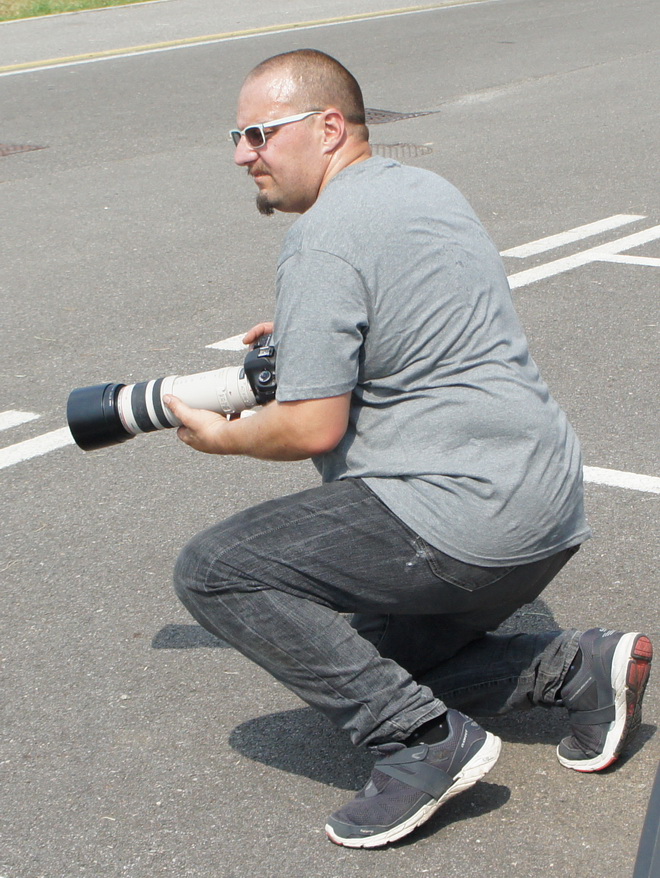
if you want to always be updated on our news
Follow us here

